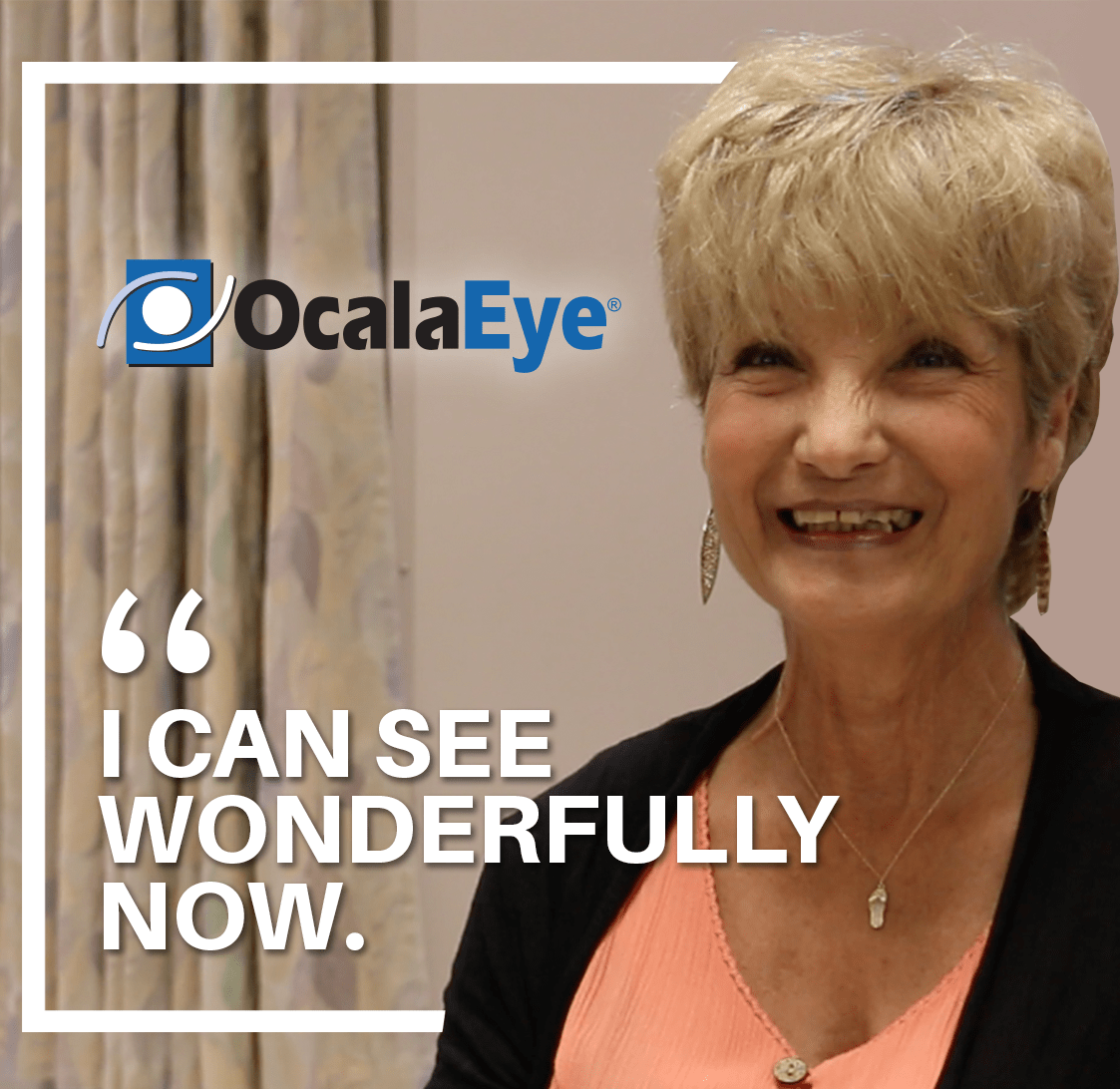Losing your visual clarity can be frustrating, alarming, and cause for concern. And when cataracts are to blame, the strength of your glasses or contact lenses will have little impact on improving your vision. For Vikki Denisa, a longtime patient of Ocala Eye, the attitude of the specialists providing vision services are just as important as the vision services themselves.
“When you’re at Ocala Eye, it’s not just about working on your eyes,” she explains with a smile. “It’s also about getting to know you personally.”
Vikki has been a patient at Ocala Eye for over a decade. When she developed cataracts six years ago, she knew she was in good hands for her treatment. “I wouldn’t go anywhere else,” she says. “It’s a family affair here.”
What is a Cataract?
A cataract is characterized as a clouding of the lens in the eye that affects vision. The lens is the clear part of the eye that helps to focus light and images on the retina, which is the light-sensitive tissue located at the back of the eye. In a normal functioning eye, light passes through the transparent lens to the retina. After reaching the retina, light is converted to nerve signals that are sent to the brain. If the lens is cloudy from a cataract, the image seen will be blurred, hazy, and less colorful.
More than 24.4 million people have cataracts, and the condition primarily affects older individuals. Cataracts are the most common cause of vision loss in people older than 40 and the leading cause of blindness worldwide. By age 80, more than 50% of all people in the U.S. either have a cataract or have had laser vision cataract surgery.
The most common type of cataract is caused by the normal aging process of the eye. It is possible to develop an age-related cataract as young as 40-years old.
Signs and symptoms of cataracts include:
- Cloudy, dim or blurred vision
- Progressively greater difficulty seeing things at night
- Sensitivity to light and glare
- Needing bright lights while reading or other activities
- Seeing “halos” around lights
- Having to change eyeglass or contact lens prescriptions often
- Fading or yellowing of colors
- Having double vision in one eye
Beyond aging, some factors that can affect a person’s likelihood of developing a cataract including diabetes, excessive exposure to sunlight, smoking, high blood pressure and previous eye injury, surgery or inflammation.
There are a few different types of cataracts that are differentiated according to which part of the lens is affected.
Treatment for Cataracts
 The only way to get rid of a cataract is with surgery, but generally, the surgery is reserved for patients whose blurry vision interferes with their everyday activities.
The only way to get rid of a cataract is with surgery, but generally, the surgery is reserved for patients whose blurry vision interferes with their everyday activities.
Cataract surgery is typically performed as an outpatient procedure. In most modern cataract procedures, the ophthalmologist uses a high-frequency ultrasound device that breaks up the cloudy lens into small pieces that are then gently removed using suction. Another option is laser-assisted cataract surgery, which involves creating corneal incisions, removing the anterior capsule of the lens, and fragmenting the cataract. Although this method reduces the need for surgical blades and other hand-held tools, this surgery is less popular due to the high cost.
Premium multifocal lens implants are also available for cataract surgery patients. These lenses provide optimal vision at all distances: far, intermediate and near and are designed to give the recipient independence from glasses for the majority of tasks.
At Ocala Eye, we have performed thousands of successful cataract surgeries. A few of the reasons residents throughout Ocala and The Villages choose us include:
- We are North Central Florida’s best-reviewed eye-care practice.
- Patients have trusted us to perform more than 70,000 cataract surgeries since opening our doors in 1971.
- 96.5% of patients say they would refer friends and family to our practice.
- An eye surgeon is on call 24 hours a day, every day of the year.
- We have never compromised care based on reimbursement from Medicare or insurance providers.
What to Expect After Laser Vision Cataract Surgery
For most patients, laser vision cataract surgery is short and uneventful. It is not uncommon for patients to still have blurry vision, though most report having clearer vision within a few hours. Some patients develop red or bloodshot eyes due to temporary damage to blood vessels on the surface of the eye, but this redness typically disappears within a few days.
Six years later, Vikki is still enjoying the benefits of her laser vision cataract surgery.
“I can see wonderfully now,” she says.




